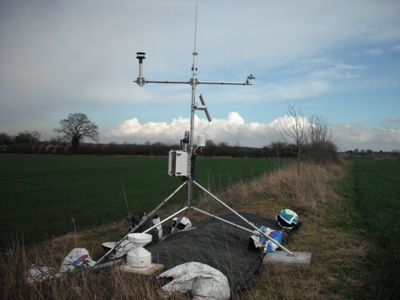
The John Innes Centre (JIC) is an independent, international centre
of excellence in plant science and microbiology who conduct research
that makes use of a wide range of disciplines in biological and chemical
sciences, including microbiology, cell biology, biochemistry, chemistry,
genetics, molecular biology, computational and mathematical biology.
They receive funding from the UK Biotechnology and Biological Sciences
Research Council (BBSRC) for four research areas that directly address
BBSRC strategic objectives in food security, human health and industrial
biotechnology:
• Growth and Development Underpinning Yield
• Biotic Interactions for Crop Productivity (in partnership with The Sainsbury Laboratory)
• Understanding Plant and Microbial Metabolism
• Wheat Improvement (a cross-institute strategic programme)
Ongoing research projects looking at the genetic control of yield
components and disease in cereals at the JIC’s Church Farm centre at
Bawburgh, Norfolk, required various measurements to be made on-site with
the data also made readily available to multiple remote users.
Cathy Mumford, managing JIC’s field experimentation consulted with
Campbell Scientific Applications Engineer Vim Mistry on the best
solution in terms of specifying an appropriate station and sensors,
the siting, installation and ongoing maintenance and, crucially, how data
could be collected and shared securely and effectively.
Campbell Scientific were awarded the contract to supply an automatic
monitoring station configured around a CR1000 datalogger with a range of
sensors to measure air temperature, relative humidity, solar radiation,
barometric pressure, precipitation, soil water content and soil temperature. The
station was installed and commissioned by Campbell Scientific engineers. The
system was supplied with a CS-GPRS modem for remote data collection by
Campbell’s Konect Data Service for which an ongoing subscription was
purchased.
Konect is a cloud-based data management platform developed by
Campbell Scientific that provides data collection and archiving but also data
relaying and secure browser-based data visualisation. For JIC this meant
that secure internet access to the data could be provided to any authorised
third party, no matter where they were located.
Case Study Summary
Application
Agricultural Crop ResearchLocation
NorfolkProducts Used
CS215 SKP215 ARG100 CS650 CS-GPRS & CS-GSMContributors
Vim Mistry and Cathy MumfordParticipating Organisations
John Innes CentreMeasured Parameters
Temperature; Humidity; Solar Radiation; Barometric pressure; Rainfall; Soil Water Content; Soil Temperature.View the PDF